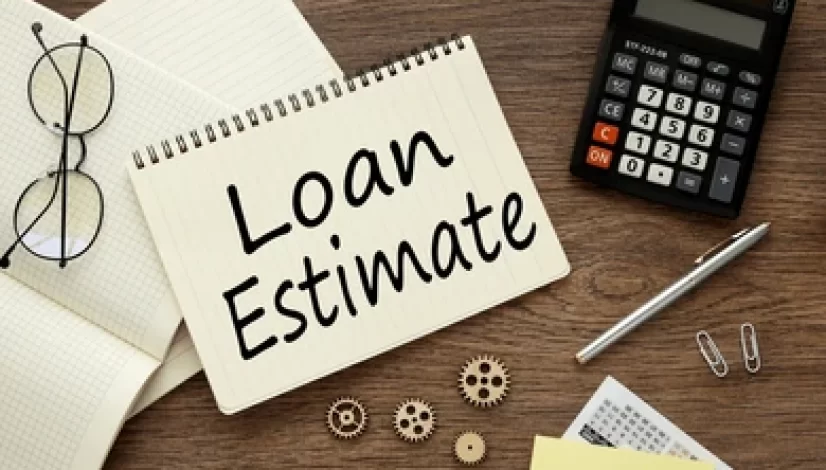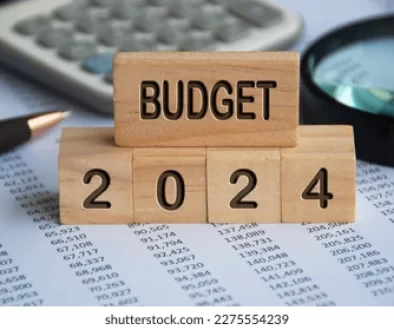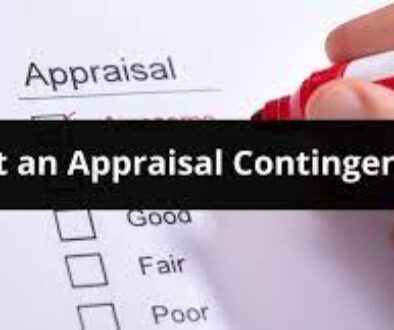Loan Estimate
Loan Estimate
What Is A Loan Estimate?
When you apply for a mortgage, your lender is required to give you a Loan Estimate: a standardized form that gives you important details about the mortgage you’re applying for. The mortgage Loan Estimate includes your estimated interest rate, monthly payment, closing costs and other details.
The Loan Estimate has only been around for a few years. In the past, you may have received two documents – the good faith estimate and the truth-in-lending statement – from your lender. In 2015, these documents were combined into the Loan Estimate to help borrowers better understand what they’re getting when they apply for a mortgage.
Every lender uses the same Loan Estimate so borrowers can easily compare loans. Getting a Loan Estimate doesn’t mean you’ve been approved or must proceed with a particular loan. It’s simply a way to understand all the details before you move forward.
What Items Appear On A Loan Estimate?
The Loan Estimate is broken up into several sections that show how much the loan will cost you. The Loan Estimate is designed to be an easy read, with the most important information listed at the top. Let’s look at the 11 items that appear on The Loan Estimate.
1. The Basics
There will be a section with some basic contact information as well as information about the property you’re buying in the top left-hand corner. It’s important to make sure this matches up with the details of your transaction.
This basic information includes:
- Date issued: This will be the date your Loan Estimate became official. If there are any updates to your estimate as you go through the process, always make sure you’re looking at the most current version.
- Applicants: This should be your current name and address. Make sure everything is correct to avoid revisions later on.
- Property: This is the address of the property the loan is for.
- Sale price: This will be included if it’s a purchase transaction. Make sure the sale price matches the amount shown in your purchase agreement.
2. Loan Overview
At the very top right-hand corner of the Loan Estimate, you’ll see a brief overview of your loan. This information should match what you’ve discussed with your lender.
This loan overview will include:
- Loan term: The loan term is the amount of time over which you’ll pay off your loan.
- Purpose: This shows the purpose of your loan – whether it’s to buy a home, refinance your mortgage or get a home equity or construction loan.
- Product: This shows the type of mortgage rates you’re getting. This may be a fixed rate or an adjustable rate.These are the most common options, but this section may show another type of loan product, depending on what you’re applying for.
- Loan type: This indicates the type of loan – for example, whether it’s conventional or FHA.
- Loan ID: The Loan ID number is the unique identification number for your Loan Estimate.
- Rate lock: A rate lock is a way of guaranteeing that your interest rate won’t change before you close your loan. If you have a rate lock on your loan, your Loan Estimate will show when it expires.
3. Loan Terms
Loan terms in the Loan Estimate will include the loan amount, interest rate, monthly principal and interest, prepayment penalty and balloon payment.
Loan Amount
This is the amount you plan to borrow. Double-check the loan amount to be sure it’s what you had requested from your lender. Keep in mind that if you’re buying a home, the loan amount won’t necessarily equal the purchase price. If you’re putting money down, this number should be the purchase price minus your down payment and closing costs.
Interest Rate
The interest rate is the annual cost to borrow money from your lender. The rate shows the percentage of your total loan balance that you’ll pay each year. It’s paid for as part of your monthly mortgage program.
This section also shows whether your interest rate is expected to change after closing. If it says “yes,” you’re signing up for an adjustable-rate mortgage (ARM). This section will show the highest your rate can possibly be in the event that interest rates were to rise. Make sure this section reflects what you’ve discussed with your lender.
Monthly Principal And Interest
This shows the principal and interest portion of your monthly payment. This may not reflect your complete monthly payment if your monthly payment will include mortgage insurance or escrow payments. If you have an adjustable rate, this will also change when your rate changes. Your maximum possible payment will be shown.
Prepayment Penalty
A prepayment penalty is a fee that some lenders charge if you pay off all or part of your mortgage early. Keep in mind that this doesn’t just apply to clients who come up with money to pay off their loan – it also applies to refinancing, which is a form of paying off your loan. Rocket Mortgage® doesn’t charge prepayment penalties.
Balloon Payment
A balloon mortgage is a short-term loan that includes smaller monthly payments for a set number of years followed by a large payment that covers the remainder of the principal. A balloon payment is typically due at the end of 5, 7 or 10 years.
Balloon mortgages can be risky. The balloon payment is often quite large – often in the tens of thousands of dollars. If you’re considering a balloon mortgage, it’s important to carefully consider how you’ll make the balloon payment when it comes due.
4. Projected Payments
Projected payments in the Loan Estimate will include principal and interest, mortgage insurance and estimated escrow.
Principal And Interest
This shows your base monthly payment. Principal refers to the amount you’re planning to borrow. It’s divided into equal monthly amounts based on your loan term.
Interest is part of this payment as well. As you pay down your principal balance, you’ll pay less in interest, so more of your mortgage payment will go toward the loan principal. That’s why your principal and interest payment is shown as one number – the payment amount stays consistent, but the balance between principal and interest changes over time.
Mortgage Insurance
You may have to pay some form of mortgage insurance depending on the type of loan you’re getting and how much money you’re putting down or the amount of equity that’s left in your home. Mortgage insurance protects your lender if you stop making payments on your mortgage.
If you’re getting a conventional loan, mortgage insurance will be required on a primary residence if you make a down payment or have existing equity of less than 20% after your loan closes. You can request removal once you reach 20% equity in most cases.
Estimated Escrow
An escrow account is an account that your lender uses to collect money to pay your property tax bills, homeowners insurance and mortgage insurance premiums. If you’ve chosen to have an escrow account on your loan, you’ll see estimated monthly payments in this field. Not all mortgages are required to have an escrow account. However, one will be necessary if you have to make mortgage insurance payments.
5. Costs At Closing
This section shows the closing costs of your loan, including what you’ll need to pay at closing. Closing costs account for a large portion of the cash you need for a mortgage and typically run about 3% – 6% of the purchase price or loan amount, depending on the purpose of the loan and the type of loan you’re getting.
“Estimated Cash to Close” is the number you’ll want to pay attention to in particular. This is the amount you’ll need to cut a check for at closing. This includes your down payment and closing costs.
6. Loan Costs
The Loan Costs section goes over the costs of getting the loan – including your lender’s fees and fees for any third-party services.
- Origination charges: This covers the lender’s administrative costs for the application and underwriting. It’ll also show any discount points you’ve agreed to pay on the loan.
- Points: To reduce the interest rate on your loan, you may want to purchase points. One point equals 1% of the loan. This information is laid out in the Loan Estimate if you elected to buy points, but you can also ask your lender how your payments will change if you choose not to buy points.
- Application fee: The application fee covers the costs of processing a new mortgage loan, and the full cost varies by lender. It’s an upfront charge that is typically nonrefundable.
- Underwriting fee: Underwriting is the way that a mortgage lender assesses the risk of lending money to you, and the fee is included in the Loan Estimate.
- Services you cannot shop for: The required services in this section are chosen by the lender. They can include an appraisal, credit report, flood determination, flood monitoring, tax monitoring and tax status research fees. Some fees in this section may depend on the kind of loan you have chosen.
- Services you can shop for: These third-party services are also required by your lender but you can choose which service provider you’d like to use. Other servicers you can choose on your own include those that provide the survey fee and title-related services.
7. Other Costs
The Loan Estimate also covers taxes and other government fees, any prepaid items, the initial escrow payment at closing and other costs. These are all added together at the bottom of the “Other Costs” section.
Taxes And Other Government Fees
Taxes and other government fees can include recording fees, taxes and transfer taxes. Recording fees are the fees that legally record the new deed and mortgage. Transfer taxes, set by state and local governments, are collected whenever property changes hands or when a mortgage loan is made. You may see city, county and/or state taxes listed here as well.
Prepaids
Prepaids are expenses or items that must be paid at closing, before they’re actually due. They’re put into an escrow account and cover items such as the homeowners insurance premium, mortgage insurance premium, prepaid interest and property taxes
Initial Escrow Payment At Closing
The amount you’ll need to pay at closing for your initial escrow payment is also included in the “Other Costs” section. This section shows costs for homeowners insurance, mortgage insurance and property taxes.
Other
This section typically lists the owner’s title policy cost, which is protection for you in case a claim is made on the home. It can protect you against financial losses if a title issue comes up later.
Claims can arise from a previous owner’s failure to pay taxes or from contractors who say they weren’t paid for work done on the home before you purchased it. There could be a mistake in the ownership history, a previously unknown heir, a pending lawsuit, legal judgment and more.
Total Closing Costs
The total closing costs are added together and any lenders credit are listed in this section. Lender credit is money given to you by your lender to offset some or all of your closing costs.
Calculating Cash To Close
The estimated cash to close is the amount of money you need to bring to closing. This part of the Loan Estimate explains how your cash to close is estimated, and it includes down payment and closing costs and the deposit you’ve already paid to the seller. It will also include how much money, if any, the seller is planning to pay toward your closing costs.
Adjustable Interest Rate (AIR) Table
There will also be a table reflecting the highest possible periodic adjustments so you can be aware of how much you could end up having to pay on a monthly basis if you have an ARM.
The table shows the index and margin that your rate is based on. You’ll also see your initial interest rate here along with your minimum and maximum possible interest rate. You’ll have information on when your interest rate can first change and the intervals at which it changes after that.
Another important thing to be aware of specifically in this section is the one that covers the interest rate changes during adjustments. You’ll see caps for the amount of the first change and any subsequent changes, along with a lifetime cap on the amount the interest rate can increase or decrease.
8. Lender Information
Next, you’ll see the information for your lender including the name and licensing. Name and licensing information will also be included for your loan officer. There will also be email and phone contact information.
9. Comparisons
You can use the final portion of the Loan Estimate to see how much you’ll pay in principal, interest, mortgage insurance and more over the course of 5 years.
It shows your annual percentage rate, which will be higher than your interest rate, because it takes into account not only your interest rate, but any points, mortgage broker fees and any other charges you pay to get your loan.
This section also shows your total interest percentage. This number refers to the total amount of interest you’ll pay over the loan term as a percentage of your loan amount. It’s calculated by adding up the scheduled interest payments and dividing that total by the loan amount.
10. Other Considerations
The “Other Considerations” section of the Loan Estimate doesn’t list any costs. It’s simply a list of items you’ll need to be aware of, including appraisal, assumption, homeowners insurance, late payment, refinance and servicing information.
Appraisal
This is the cost to professionally evaluate the market price of the house. If the property isn’t worth the purchase price, you can negotiate a lower offer, pay the difference between the mortgage and what is still owed, or walk away. The Loan Estimate mentions that you can pay for an additional appraisal at your own cost.
Assumption
Assumption indicates whether the loan could become an assumable loan in the future, meaning that if you sell or transfer your home to someone else, that person may or not be allowed to adopt your outstanding mortgage and its terms.
Homeowners Insurance
You must have homeowners insurance from a company that your lender finds acceptable. Homeowners insurance protects your home against risks such as lightning, fire and theft. Be sure your policy offers the right types and amounts of coverage for your home.
Late Payment
You’ll pay a late fee if you make late payments on your loan, and this section explains the terms of those late fee payments.
Refinance
When you refinance your mortgage, you get a new loan for your home. The new loan pays off the old one so you’re left with just one loan and payment. It’s generally done to shorten a loan term, lower monthly payments, or to take cash out of the equity you’ve built in the home.
When you’re allowed to refinance depends on your future financial situation, property value and market conditions. This part of the Loan Estimate may tell you that you may be unable to refinance your loan.
11. Confirm Receipt
Applicants and co-applicants sign and date this section of the Loan Estimate. By signing, you only agree that you’ve received the form. You don’t have to accept the loan.




